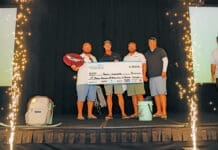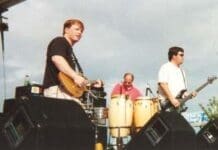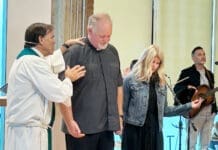By Kay Leaman, Health Architect
Over the last couple months, I have talked to friends and acquaintances that have shared their struggle with Planter Fasciitis. Maybe you or someone you know is dealing with this ‘pain in the foot.’
The plantar fascia (noted as pf) if a fibrous tissue that connects the toes to the heel along the bottom of the foot. This thick band can become over-stretched or have excess strain due to repetitive stress, which can lead to chronic degeneration or small tears in the fascia fibers where it connects to the heel bone. In addition, ultrasounds often show calcifications and a thickening of the pf.
The cause is not fully understood, but has been connected to activities such as running, ballet and other types of dance, age, weight or occupation.
The pain experienced most often shows up first thing in the morning when the foot first touches the floor and is localized in the heel. This is due to overnight inactivity and the pf stiffening (like a sore muscle). Choosing to avoid walking on the foot can eventually lead to problems in the foot, knee, hip or back.
There are several therapies that can aid in the healing process:
- Stretching: Take time before letting your feet hit the floor to slowly stretch. Place your ankle over your knee, pull the toes up until you feel the stretch. Holding that position gently massage the pf for a few minutes. This will help the pf to relax relieving some of the sharp pain one experiences after a period of inactivity.
- Calf Stretch: Standing in front of a wall bend the knee on the good foot a step back on the affected foot. Slowly move the injured foot from the balls of the foot to placing the heel on the ground. This stretches both the calf and the pf. If you can’t place your heel on the ground due to the pain, bring the leg in a bit to lessen the ‘stretch.’
- Ice the foot after stretching or if your pf begins to act up due to over-activity.
- Athletic Tape: Learn how to properly apply from a professional such as a physical therapist to support your pf during your active times.
- Night Splints: This over the counter product keeps the pf in a stretched position while you sleep which can lessen the pain experienced upon rising.
- Orthotics: These can support your pf during the day.
- Boot, Cane, Crutches: These can be helpful with severe cases or to allow the inflammation to decrease before adding other treatments.
- Steroids: The use of steroid injections can offer temporary relief. However, multiple shots are not recommended as they can weaken the pf and possibly cause it to rupture.
- Plasma Injections: Platelet rich plasma from your own blood can be injected to promote healing. An ultrasound is used to aid in precise needle placement.
- Extracorporeal Shock Wave Therapy: This is for chronic plantar fasciitis when other therapies have failed. Sound waves are directed at the area of the heal pain to stimulate healing. This therapy hasn’t been shown to be consistently effective even though some studies have shown promising results.
- Ultrasonic Tissue Repair: A minimally invasive technology where ultrasound imaging is used to guide a needlelike probe into the damaged pf tissue. The probe tip vibrates rapidly to break up the damaged tissue which is then suctioned out.
- Surgery: When all else fails. The surgery entails detaching the pf from the heel bone.
There are so many fall festivals coming our way. If you don’t want to miss your favorite ones, be sure to include breaks throughout your day to stretch and massage your pf and don’t forget your orthotics. Taking care of our feet allows us to have a more active and fun life. Even if you have healthy feet, a good foot massage from time to time couldn’t hurt.
Here’s to Health!
HealthyDay HealthyLife succeed.hdhl@gmail.com





























































